Leica M9 Digital Rangefinder Camera - Page 15 Index of Thorsten Overgaard's user review pages on Leica M9, Leica M9-P, Leica M-E, Leica M9 Monochrom, Leica M10, Leica M10-P, Leica M10-D, Leica M10-R, Leica M10 Monohcrom, Leica M11, Leica M11-D, Leica M 240, Leica M-D 262, Leica M Monochrom 246, Leica SL, Leica SL2, Leica SL2-S, Leica SL3, Leica SL3-S as well as Leica TL2, Leica CL, Leica Q, Leica Q2, Leica Q2 Monochrom, Leica Q3 and Leica Q3 43:
The re-view of the Leica M9 ... or what's left of it
By: Thorsten Overgaard. September 29, 2011. Edited August 14, 2020.
Add to Flipboard Magazine.
The Leica M9 was released on September 9, 2009 at 09:09 AM in New York, so this page 15 of the (probably) longest ever camera review, may mark the two-year birthday of the Leica M9. So let this be a sort of re-view of the Leica M9, or what's left of it.
Now, what is there to review? I thought about this recently, and based on what I get in e-mails and from people I meet, it comes down to happiness. As simple as that.
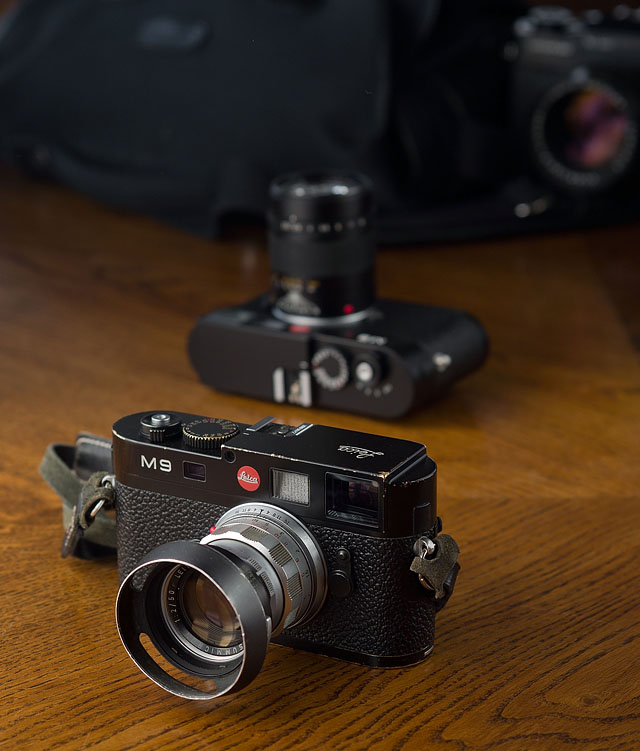
What's left of it after two years: The buffer was checked some weeks after I got the Leica M9, but apart from that it has only had sensor cleaning and adjustments of focus performed - and one time Leica Cemera AG had to glue the focus prism together after the camera had hit the floor twice within few weeks (new bottom plate as well on that incident). For it's two years birthday it was sent to Leica Camera AG for a complete service check before we head to Asia for a month.
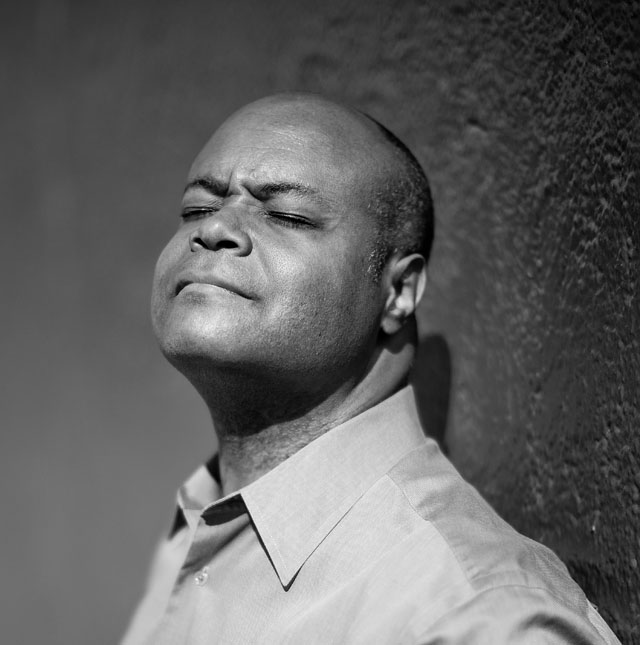
American actor Terence Hines. Leica M9 and Leica 50mm Noctilux-M f/1.0 at f/1.0 in sunshine with 3-stop ND filter (Neutral Density filter; a grey filter that reduces the light).
The tool for the photograpy pilgrimage and the time traveller
The Leica M9 digital rangefinder is not about the pixels or the lack of buffer. In the last two years Leica M9 has created an evolution in digital photography (with 200% increased sale of Leica cameras compared to a 4% increase in sale of all other brands). What distinguishes the Leica M9 is that it is used by photographers who have made a distinct choice to go back to the basics, simplicity and the utmost quality money can buy.
This leads me to give a short characteristic of the typical Leica M9 and Leica M9-P shooter as I see him. And even I mostly see a him, actually about 10% of the Leica M9 shooters are women - to whom I will dedicate a paragraph in just a moment.
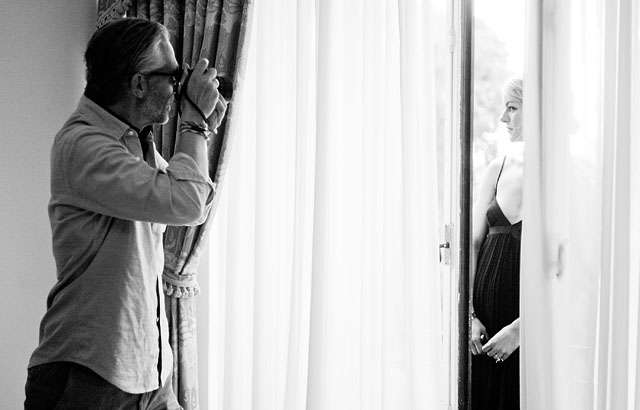
Hans van Dijk from Netherlands working with his Leica M9 and Noctilux at the Palermo seminar in May 2011.
The Leica M9 user
First of all the Leica M9 shooter wants to dedicate time and money towards photography, and whether they are in a situation where money does matter or doesn't matter the slightest, the Leica M9 has been eyed out as the optimum tool for this pilgrimage into creating photographs.
Often the simplicity of the tool is seen as an obvious signpost that this is the right tool.
For some photographing is the preservation of things important, and when that is the case, it's implied that in this urge to preserve daily life, family, our time, the beauty of things or whatever, the quality of that preservation must be optimum. An iPhone just won't do in preserving things.
| |
|
|
|
|
| |
Buy my "New Inspiration Extension Course"
|
|
| |
|
|
|
|
| |
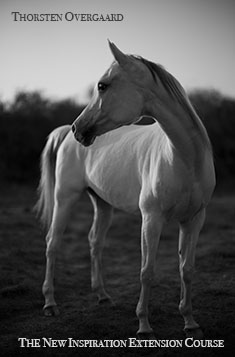
Need more info?
Read this article. |
|
Get inspired and rebooted!
This extension course if made for you! It can be done at home and travel at your own pace. I have taught workshops for years and the Overgaard New Inspiration Extension Course is my experience compressed to a package of training, articles, drills, assignments and video tutorials that will inspire you and take your photography to the next level! For a limited time my course includes something you cannot get anywhere or anytime else:
A portfolio-review by Thorsten Overgaard.
| |
|
|
| |
"The Overgaard
New Inspiration
Extension Course"
For computer and iPad. 181 p eBook. |
|
| |
Only $798 |
|
| |
|
|
| |
 |
|
| |
|
|
| |

|
|
| |
|
|
Order now - Instant delivery. |
|
| |
|
|
|
|
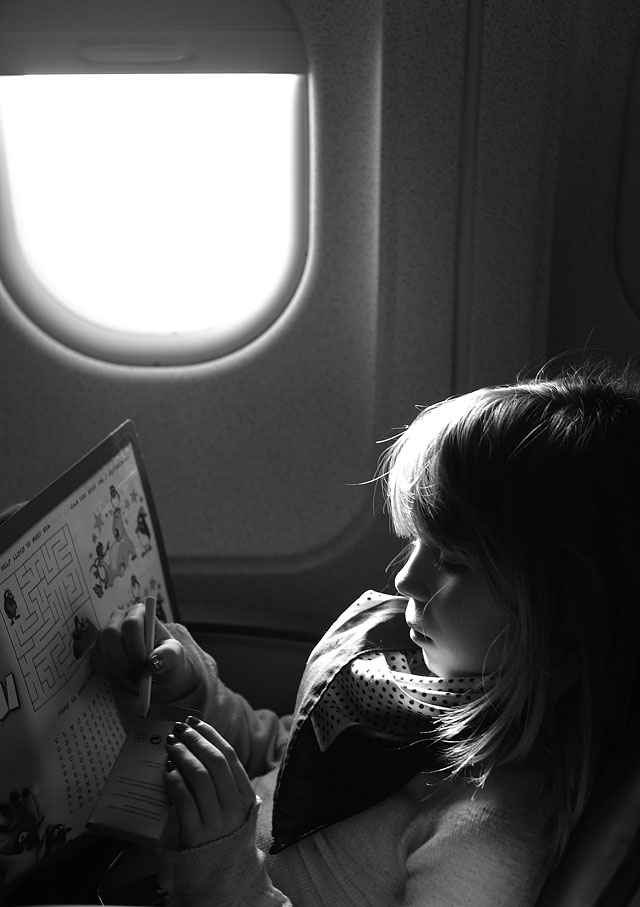
My daughter Robin Isabella doing a bit of work on the airplane from New York. Preserved for the future with Leica M9 with 50mm Summicron-M f/2.0.
Downsizing is the key to more
Quite many Leica M9 users possess a goal of becoming, moving towards or obtain to some degree, the ability to capture images as the great masters of photography.
Obviously this doesn't come from one day to another, it takes understanding to find out what the great masters did and how they did it. But in general Leica M9 users often tell how they have experienced - or realized - that the dSLR cameras with 250 features they used to own, something was hindering them in even seeing beyond the camera itself. So first things first, they were seeking for clarity and simplicity.
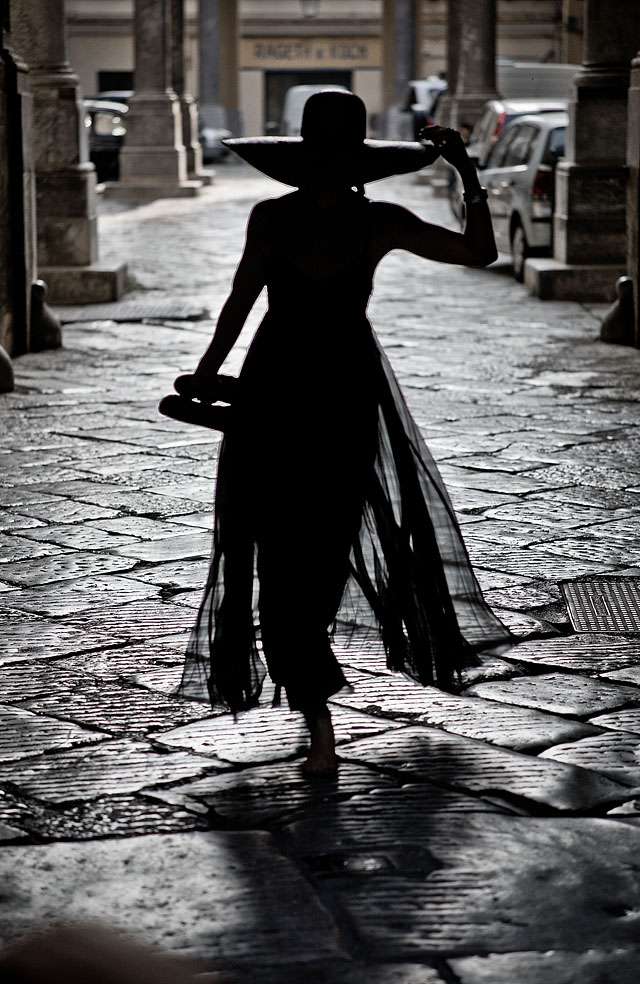
Leica M9 with 90mm Summarit-M f/2.5
The tool itself, the brand and the history of Leica, has something to do with the decision. Most people I meet have come across the camera and just felt a connection ... that this was the right camera. And then after little or more study in trying to figure out why, gone to get one.
It's not unusual that I meet a Leica M9 owner with a bag full of exotic glasses that almost feel he must excuse his equipment, which - he thinks - he has no reason to have. Except that there was an irresistible attraction.
Quite many I meet have had a dSLR kit as a statement of their interest in photography, but then have found them self using it less and less. They are generally incredible happy that they finally found such a delightful small tool that just feels so right and creates images they would only have dreamt possible.

International model, and Leica Digllux 2 photographer, Maja Mazurkiewicz posing. Leica M9 with 50mm Summicron-M f/2.0 (II)
The female Leica M9 and Leica M9-P users
I promised to dedicate a paragraph to the female users of Leica M9. Those are about 10%, give or take. One thing that is remarkable about female photographers at large, and so evident it's not even a generality when I state it here, is their unhindered enthusiasm.
Female Leica shooters shoot what they see, and often ends up talking with their subjects, they lay down on the street when the shot calls for a low angle, and they are enthusiastic without end about the Leica M9 - which you could call a handbag with a purpose!
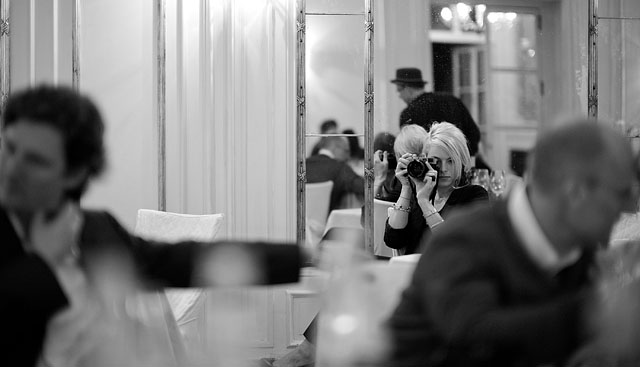
Shooting with female Leica M9 photographers is so interesting every man should try go shoot with one. And if your wife or girlfriend is just slightly intersted in the Leica M9, you should be a gentleman and get her one. It will be the best investment ever in that you can share an interest where you relax, walk about, produce images, observe things and are together even you are not next to each other. Relationships are all about creating, and photography happens to be a great way of creating something together.
As most people will be aware, photographing does not go well along with browsing shoe stores or buying supplies in the grocery store. It's simply a matter of rhythm; whereas a group of photographers can easily walk together with different paces for hours interested in different subjects, and end up the same place in the end without having spent one minute waiting for the others. Imagine being able to spend that type of time with your spouse.
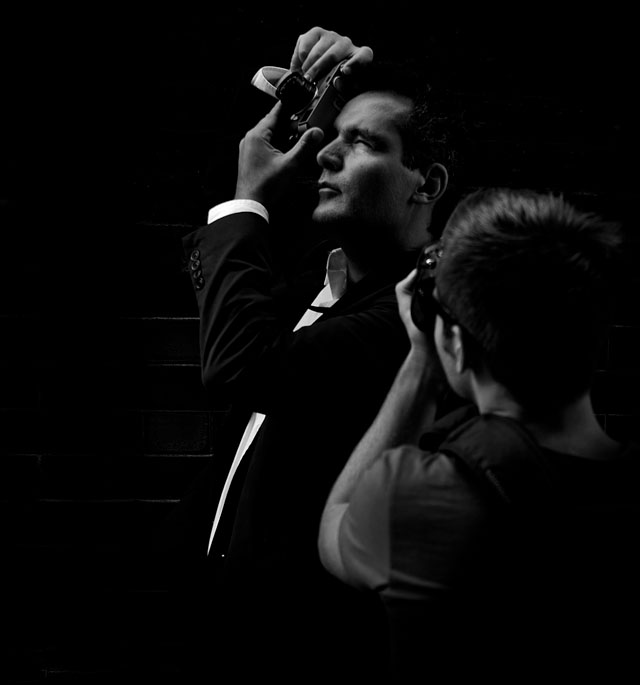
Student photo by nurse Sharron Franks of United Kingdom made on the Overgaard Photo Seminar in London, September 2011. Leica M9 with 35mm Summarit-M f/2.5.
But to the matter. It's not that men don't pay attention or aren't enthusiastic, because they are. Men just tend to make sure their cover is ok. They don't take the same childish chances as women. Hence men doesn't get the interaction with people, the contacts, the extraordinary different images that women does.
The Leica M9 camera is one that invites to play, and women does that very well, naturally.
I've met a few female Leica M9 photographers who was well off and could simply buy what they wanted. But I have also met the single mother to three daughters who simply had to have that beautiful camera. In that way women are not that different from the men, as I have met the male student who bought a Leica M9 with lenses despite the fact it was the sinlge largest investment of his lifetime.
But ... It just felt right.
And that seem to count - in almost all cases - more than the price.
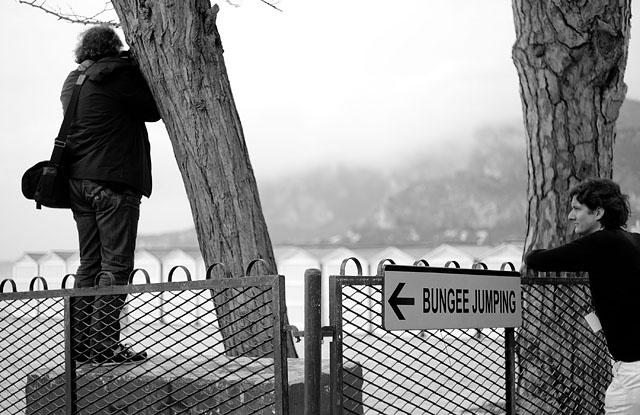
German photographer Oskar Schmidt and Swiss photographer Marc Wueger.
All you need is love
On the other hand, I have also met fully equipped working photographers who claimed they couldn't afford a Leica. It’s really not a matter of camera megapixels, features, price, brand or any other thing. It’s simply matchmaking between a photographer and the piece of equipment he or she will fall enough in love with that he or she will use it to capture photographs.
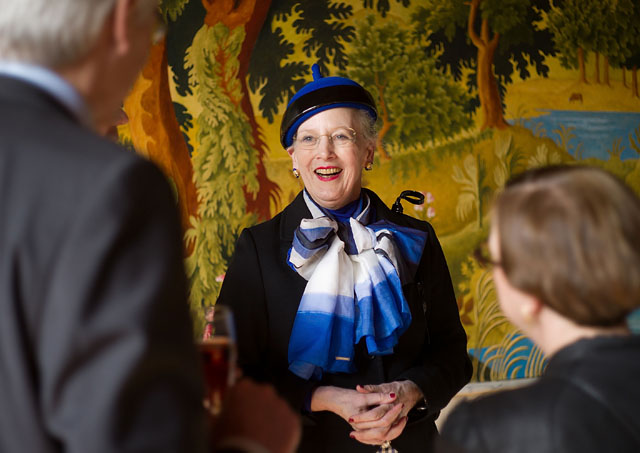
Queen Margrethe of Denmark. Leica M9 with 50mm Summicron-M f/2.0.
Of course, most people fight with equipment they don't love, less understand. And that goes for professionals to the same degree as any other photographers. I’ve seen professionals ask each others “I wonder what this button is for” or “now, what does that mean” or “how do I…”
When all you need is love.

Crown Princess Mary and Crown Prince Frederik of Denmark with their four children in front of their home, the Frederik VII Palais of Amalienborg, Copenhagen. Photographed with Leica M9 and 50mm Summicron-M f/2.0
True love for photography means that you take any piece of equipment, and then you believe in it and make the best out of it.
If you’re not a photographer, you will take a piece of equipment and learn it so well you can tire all your friends with long talks about all the new features of this piece of equipment.
Or
You write a critical review about the faults that prevented you from taking all the photos that camera was not designed for.
What you should do instead is blow their socks off with great photos.
I guess what I’m saying is as simple as this: Find a camera you will love to take out for a shooting, one you will be proud to wear and use. One you feel has something special (perhaps something only you have seen or know about).
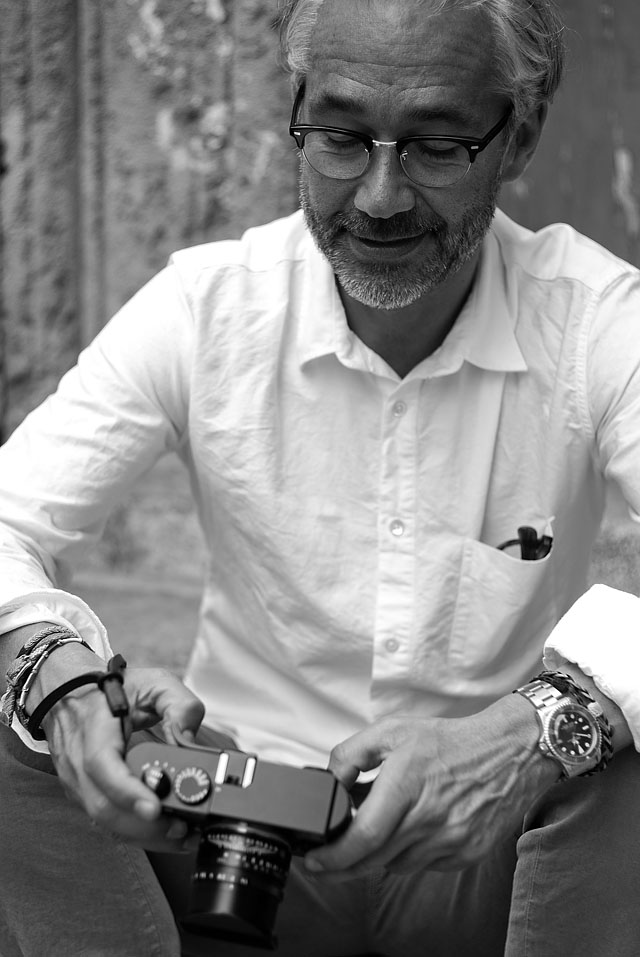
All you need is love: Hans van Dijk with his Leica M9 and 50mm Summilux-M ASPH. Shot with Leica M9 with 50mm Summicron-M f/2.0
There was a recent blog by a Danish photographer on how important he had been taught through his education, never to fall down on equipment. Hence he had accumulated a large bag of it. But then one day when he was to photograph the Danish prime minister through tinted glass, the autofocus and auto exposure on his two dSLR cameras failed and the PM was gone (that was the day he quit as PM and moved to NATO). Hence his conclusion was to go back to simple equipment you know well and can control.
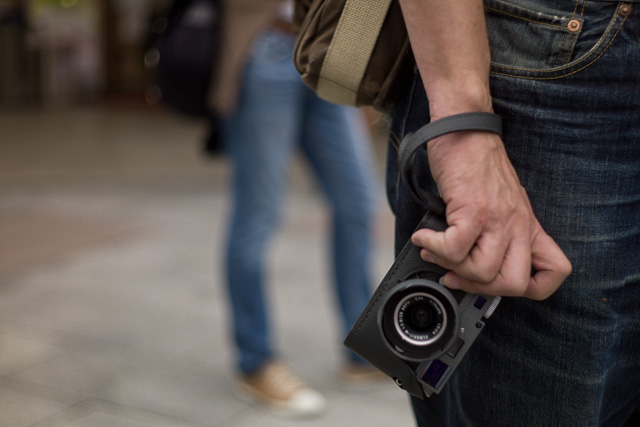
The Leica M9-P Hammerthorne special edition in the hands of Stig Bjorge in Tokyo. It's the Special Edition celebrating the 5 year anniversary of Leica Camera Ginza Store in Tokyo, made in 100 pieces with a chrome Leica 28mm Elmarit-M ASPH f/2.8. On the photo with Luigi grey leather strap and case.
The time traveler
Apart from being in a state of pilgrimage with their new re-found photography with the Leica M9, what can be said for almost any and all of the people I have met with a Leica M9 (and a few M8 and M8.2 owners) is that they travel. As part of their lifestyle or because what they do in life calls for travel. And no camera is better for having over the shoulder through an airport, on a rented city-bike, at a business dinner or on a walk up a mountain.

Shooting models in Palermo at the Advanced Workshop in May 2011.
Travelers usually have spent some time and energy researching what equipment is best for travel and have downsized the belongings they take with them to the minimum size and weight, yet the maximum life quality.
Recently I have noticed that some Leica M9 shooters are into some sort of time travel. In the sense that they want both to recreate the feeling of being a classic photographer, as well as trying to recreate the look ad style of the past. Or the forward time traveler, who want to make the present a beautiful vision for the future viewer.
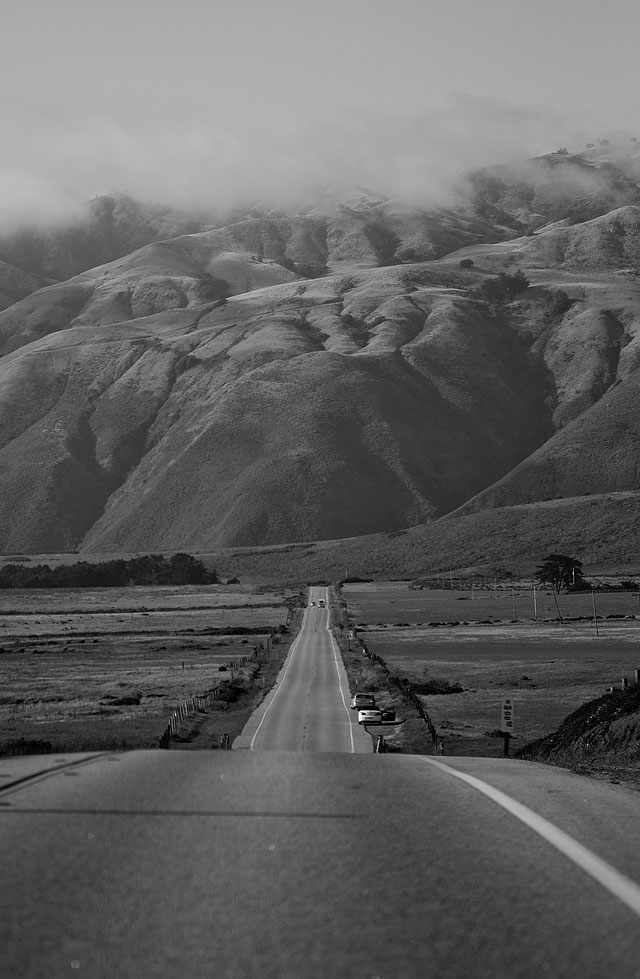
Traveling with Leica M9: Pacific Highway, also known as Highway 1, along the coast from Los Angeles to San Francisco. This one was taken with Leica M9 and 90mm Summarit-M f/2.5 out the top of a convertible.
| |
|
|
| |
"Your time is limited. Don't waste it living someone else's life. Have the courage to follow your heart and intuition. They somehow already know. Everything else is secondary"
- Steve Jobs |
|
| |
|
|
In a way, perhaps my liking for the 50mm Leica Summicron-M f/2.0 (Version II) is a time travel back to a look of the 60ies. I like when it happen, and in June 2012 I will be doing an Advanced Workshop in The Alps where we will resemble the look of the 40ies and 50ies with models and some funky locations.
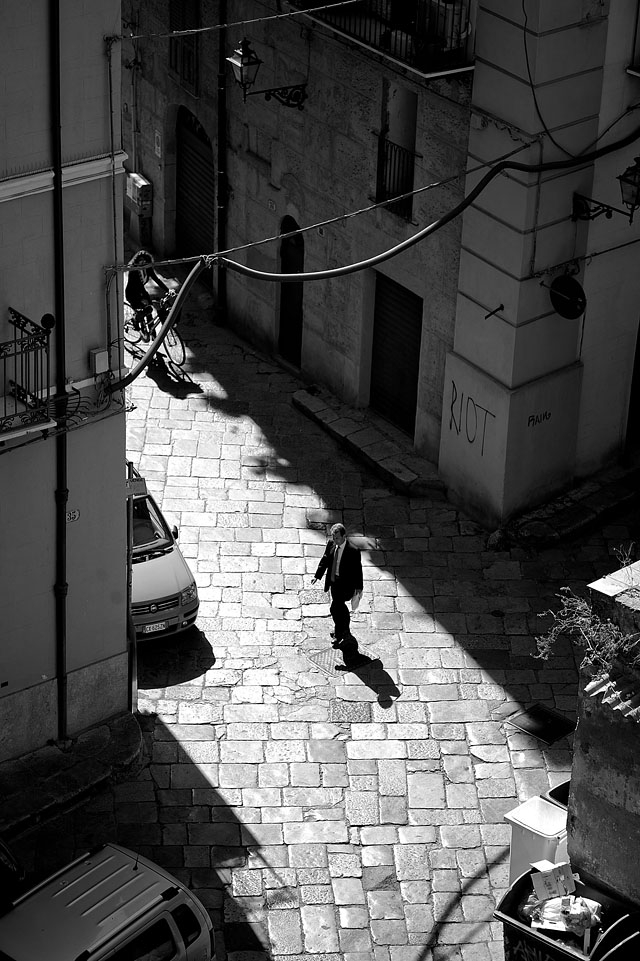
Early morning light in Palermo is very strong and comes in from a low angle. Leica M9 with 90mm Summarit-M F/2.5
Be a photographer and be ready
Being able to photograph in the streets is not just a matter of being able to confront people. If you have your camera neatly packed in a photo bag and first have to unpack the camera from it's nice leather pouch, take off the lens cap, turn it on and check the settings before you can shoot, you are facing many barriers that simply make it easier not to do photograph.
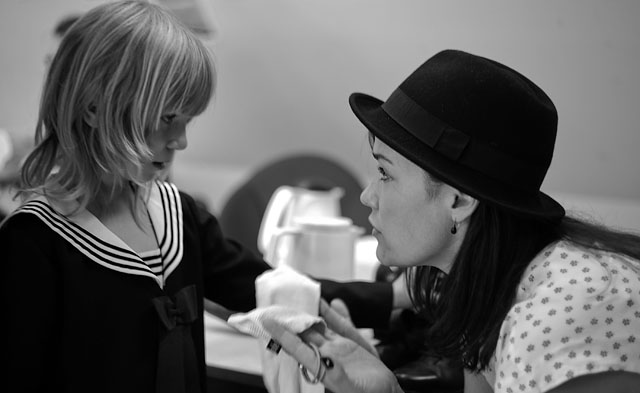
I say "always wear a camera," and by that I mean that you have your camera over the shoulder, turned on, set to the right ISO and white balance. And then you look for things. If you do this, you will feel as a photographer, be aware of the viewpoint of the lens you have on the camera and start seeing photographs. And when you see something, you have to have a built-in reflex to slightly touch the release button so as to turn the camera from sleep mode to shooting mode; and by the time the camera has reached it's place in front of your eye, it is powered up and ready. All you have to do is focus and shoot, then drop the camera so it falls back to its place by your hip.
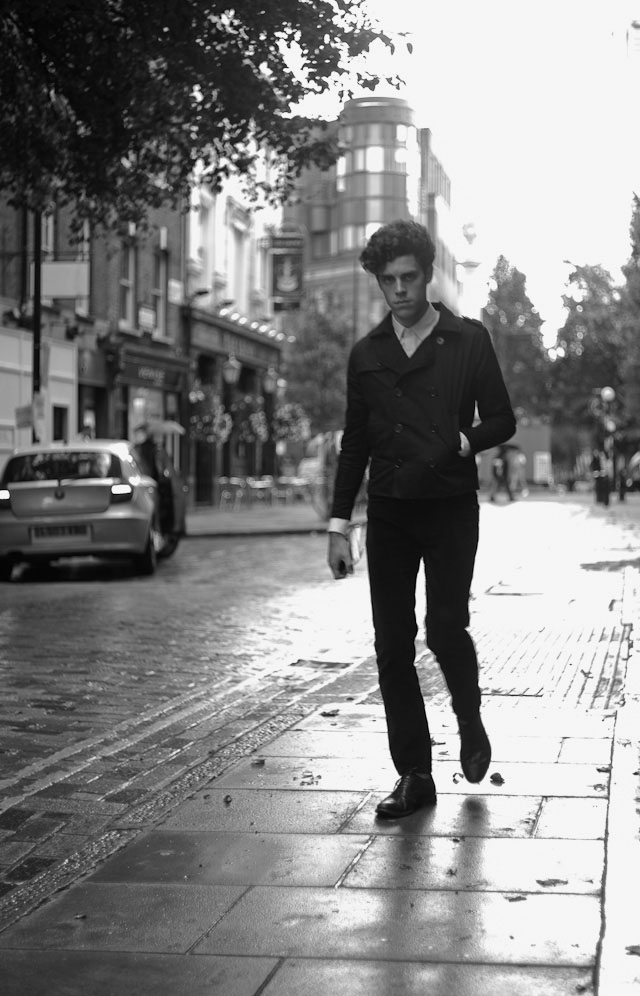
Singer Charlie Fink of Noah And The Whale in the rainy streets of London. I just shot a photo from the bench where I was having coffee (Monmouth Street Coffee Company - possibly one of the best coffee bars in the world) becauase he looked cool. I had no idea who he was.
You will experience that it doesn't require a lot of courage to photograph anywhere when you can do it as easily as that. It does require that you leave the camera on (and set the Auto power off to 2 minutes in the menu), preferable in the C mode (continuous instead of Single mode). Having your camera ready by your hip and not as a collector of rare and exclusive equipment in a bag will make you feel like a photographer, and soon you will earn the right to take photos. As a photographer does.
You may feel that every eye rest on you and that you must work discreet and quickly. Which is not the case. But the more preparation you have to perform to get the shot, the more attention you are liable to attract. But apart from that, you can work unnoticed, even if you had to unpack a dSLR and mount a 400mm on it inside a McDonalds. You notice more than others.
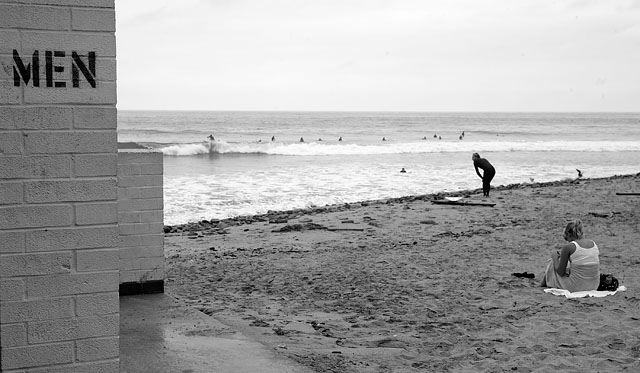
To prove this point I recently walked through London with a student and did an experiment: We walked into a small park where people were having lunch, sat and talked, children were playind and couples kissing. My postulate was that the longer you stay, the more you own the place. People may notice you, but if you stand still and do your thing, they will forget you. The urge you feel is that you must quickly leave before anyone notice, but in fact, the longer you stay, the more unnoticed you become. So we hang around for half an hour, and as little as we paid attention to what people had for lunch, or if they were smoking or not, as little did people pay attention to two photographers moving around and taking photos.
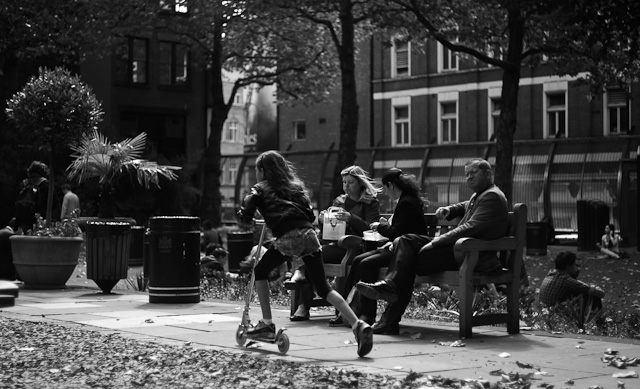
Hanging out in a park in Soho, London. Leica M9 with 50mm Summicron-M f/2.0.
More precisely, if you shoot in the street and point your camera in a 45° across the walking path, people will only pay attention to you if you pay interest in them, have eye contact or move. And even then they will forget your presence after a very short while. We all orient us when we walk about; there is a car, there is a dog, two people to the left and three people to the right. But then we forget them, unless they start moving in an unexpected direction so we have to re-orient us.
But the first thing to do to photograph is to unpack that camera, throw away the lens cap and have the camera turned on. And when you walk into a different location, you must change the settings accordingly so you can shoot.
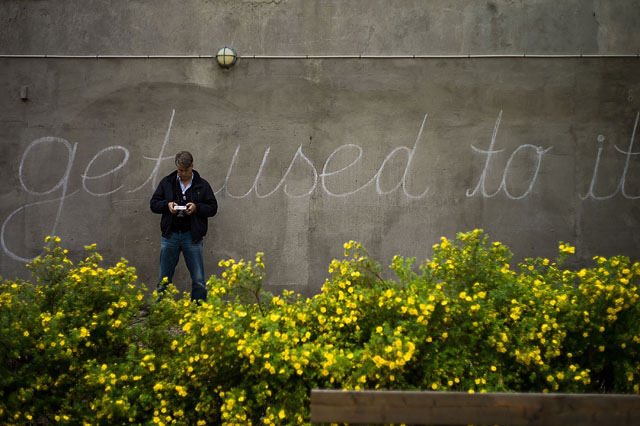
As I guess I have mentioned earlier, I almost always carry a camera, and I automatically change ISO to 800 whenever I walk into a supermarket or a café, and at the same time I change the White Balance (to 3200 Kelvin whenever indoor with any form of artificial light; which is the only time I use manual Kelvin setting. In all other cases I use Manual White Balance by shooting a WhiBal card. But in artificial light 3200 Kelvin the the most usual form of key light (main light source), and only if I would do a portrait or any other important photo in a certain spot I would shoot Manual White Balance using the WhiBal card. For any random indoor photographing, setting the camera to 3200 Kelvin will result in photos that need little or no adjustment in Lightroom). Likewise, when I walk outdoor, I set the ISO to 200 (or 80 in sunshine) so I am ready.
The point is, I am ready with my camera and change settings the same way as I would turn my mobile phone to silent whenever walking into a church or a cinema. It's a natural reflex.
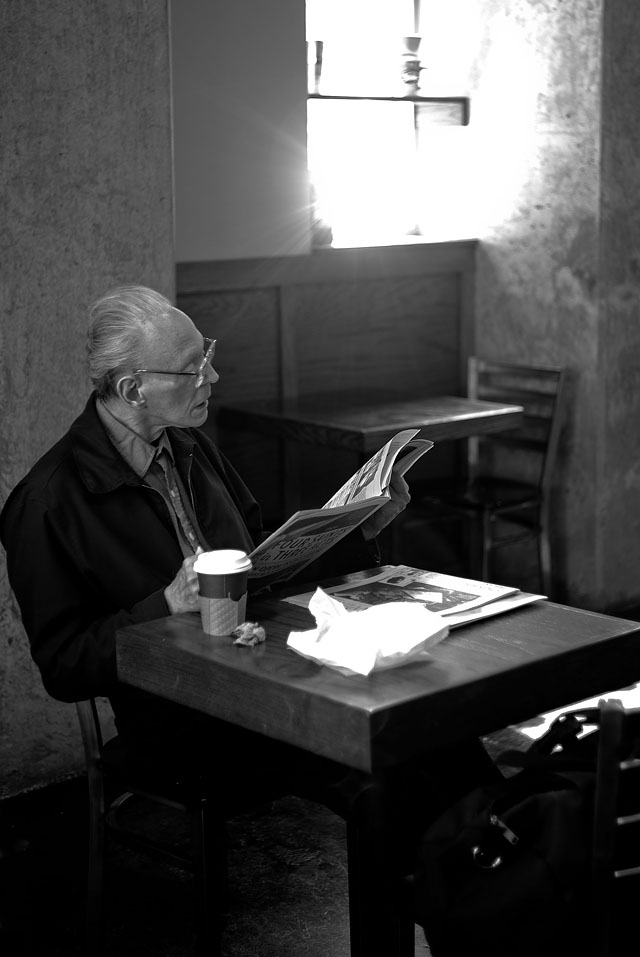
When in San Francisco I was editing Sunday afternoon and wanted to walk on the other side of the street to get a coffee. On my way out the door I though that I should grab my camera, after all I keep saying "always wear a camera" so I should do it my self, even for a four minute trip.
Walking into the café I see this image and shoot three frames of it while they prepare my coffee. And there you have it, a good example of why you should always wear your camera, even for a short walk to the other side of the street. Leica M9 with 50mm Summicron-M f/2.0 (Verision II).
Know your rights as a photographer
The rights of a photographer are not much different if you are a professional with a press card, or an amateur. Only advantage having a press card is that you can usually get into areas sealed by the police and attend semi-security events (though the most popular use is that it gives free access to night clubs and such).
But for actual events such as royal weddings and ministers press events you need accreditation, and in that regard the press card doesn't really count. Even amateurs would be able to get access if they have a reason; like having a blog or other purpose making the want for access legit.
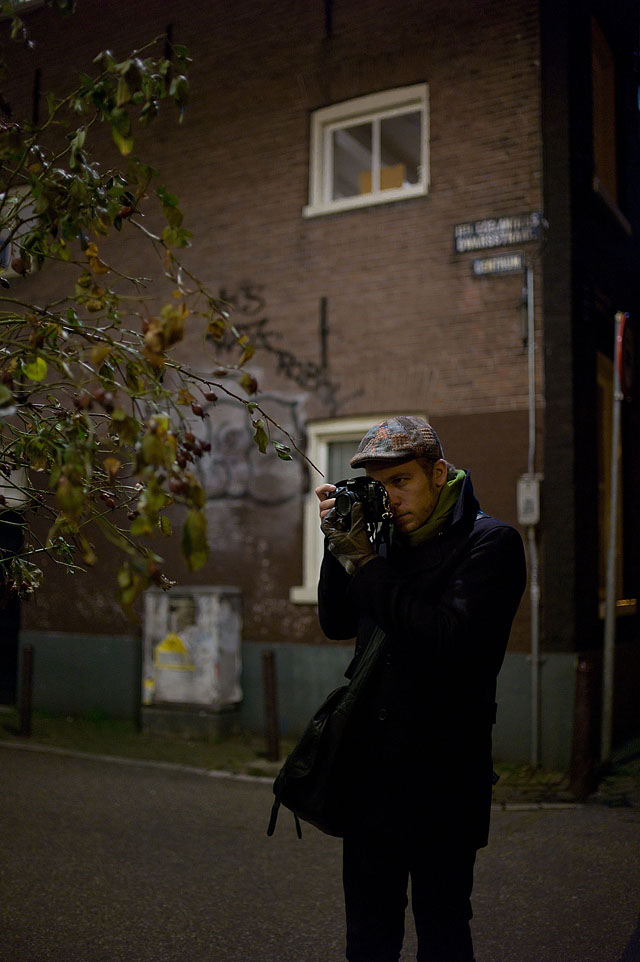 Amsterdam by night. Leica M9 with 35mm Summilux-M ASPH f/1.4 Amsterdam by night. Leica M9 with 35mm Summilux-M ASPH f/1.4
I’m a Photographer, Not a Terrorist!
The actual rules for photography in public are much the same in USA and UK. Below are the rights compiled with help from Eric Kim, David Hoffman, Marc Vallée and Jonathan Warren with additional legal advice from Anna Mazolla at Hickman & Rosecurrent.
| USA: |
|
UK: |
| |
|
|
1. You can make a photograph of anything and anyone on any public property (streets, sidewalks, town squares, parks, government buildings open to the public, and public libraries), except where a specific law prohibits it
2. You may shoot on private property if it is open to the public (malls, retail stores, restaurants, banks, and office building lobbies), but you are obligated to stop if the owner requests it.
3. Private property owners can prevent photography ON their property, but not photography OF their property from a public location.
4. Anyone can be photographed without consent when they are in a public place unless there is a reasonable expectation of privacy.
e.g. private homes, restrooms, dressing rooms, medical facilities, and phone booths.
5. Despite common misconceptions, the following subjects are almost always permissible:
- Bccidents, fire scenes, criminal activities.
- Children, celebrities, law enforcement officer.
- Bridges, infrastructure, transportation facilities.
- Residential, commercial, and industrial buildings.
6. Security is rarely an acceptable reason for restricting photography. Photographing from a public place cannot infringe on trade secrets, nor is it terrorist activity.
7. Private parties cannot detain you against your will unless a serious crime was committed in their presence. Those that do so may be subject to criminal and civil charges.
8. It is a crime for someone to threaten injury, detention, confiscation, or arrest because you are making photographs.
9. You are not obligated to provide your identity or reason for photographing unless questioned by a law enforcement officer and state law requires it.
10. Private parties have no right to confiscate your equipment without a court order. Even law enforcement officers must obtain a court order unless making an arrest.
No one can force you to delete photos you have made.
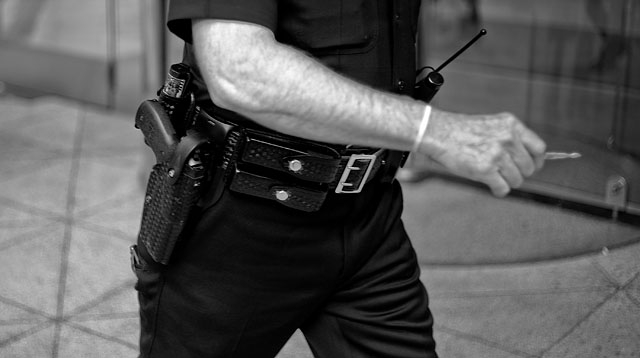
These are general guidelines regarding the right to make photos and should not be interpreted as legal advice. The guide is provided without warranty as to the accuracy of the information it contains. The author, publisher and distributor of this guide will not be held responsible for any loss suffered by any person that is directly or indirectly attributable to reliance on the information contained in this guide. |
|
If you are stopped and searched under section 44 of the Terrorism Act (currently suspended and under review), you do not have to give your:
Name, Address, Date of Birth, DNA or Reason for being there. Nor do you have to explain where you are going.
However, if the police decide that there is reasonable suspicion to arrest you for an offence, you do have to give your name and address.
You do not have to comply with any attempt to photograph you, although you cannot flee the scene.
The Police cannot delete any images on your camera. They can only view them in very limited circumstances.
If you are driving a vehicle, when stopped you must give your name and address.
Failure to stop or obstructing a police constable acting under section 44 is a criminal offence.
Police Powers
Under section 44, a police constable in uniform is entitled to: Pat you down. Detain you for the duration of the search. Remove outer clothing. Require you to remove any item which he reasonably believes you are wearing to conceal your identity.
Look through your pockets and anything you are carrying.
Seize any article he reasonably suspects is intended to be used in connection with terrorism.
Search your vehicle and anyone in it.
What You Should Do
- Insist on a written record of the search.
- Make sure it is legible and includes details of the officers' shoulder number and the reason for the stop.
- Note exactly why they said you were being stopped and searched (this may be more extensive than the reference in the record slip).
- Ask to see the officers' warrant card and note the number. (This is useful when making a complaint if they have moved stations and their shoulder number changes)
Note
- A Police Community Support Officer (PCSO) may not perform a section 44 search without a police officer present.
Other Laws
- It is not against the law to photograph police, vehicles or equipment, unless the images are "likely to be useful to a person committing or preparing an act of terrorism".
- It is not against the law to take photographs in an area where an authority under section 44 is in place.
- Although it is rarely used, the Official Secrets Act prohibits photography that threatens the security of the state. This includes:
- Military establishments and munitions stores, aircraft and ships.
- Civil Aviation property and naval dockyards.
-
Railways, road, waterway, power stations, waterworks and nuclear power stations that have been defined as prohibited places by the Secretary of State.
- Telephone exchanges and communications centres operated by the Crown.
- Anywhere else that is a prohibited place by order of the Secretary of State.
- You can photograph private property if you are on public property or a public right of way.
- Private property owners may impose restrictions on photography, this only applies to photographs taken from somewhere on their property. Restrictions may not always be obvious but will still apply. They cannot be imposed after the photography has occurred.
- Private property owners or their agents (for example security guards) may not view or delete images on your camera or demand your name and address. They may require you to leave immediately and by the most direct route without giving any reason if they choose.
- There is no right to privacy in a public place, however, there are circumstances in which a person has a reasonable expectation of privacy, particularly if they are inside their own home. Childrens privacy rights are particularly protected. You therefore need to be aware that publication without consent may leave you open to legal action. (In Denmark, as an example, it is illegal to photograph in through windows - open or closed).
|
As can be seen, you have very little stopping you from photographing. Just remember that other people have lifes as well, and you should respect that some people just don't like to be photographed. When I notice someone who does not like to be photographed (the stand out, usually), I will let them know or see that I'm not shooting them. Or I will go and tell them what I am doing.
Model release?
A model release is something you have a person sign allowing you to use the photo for commerical purposes, meaning in advertisments, in a companys powerpoint, a video, etc. For editorial use (such as a blog, newscast, newspaper,, magazine) and private use you do not need a model release. Even with a model release, a professionel model usually needs to be paid per usage; just as a photographer. Usually model agencies will have extra fees for billboards, television, posters, etc that depends on the number of prints and lenght of the period the model is being used on them.
If you shoot models or volunteers and sell the images as micro-stock via iStockPhoto and similar you need a model release, and usually the models are not paid per usage but only for their time (just like you as a photographer is not paid per use or type of use but solely a flat rate per download). In that case the models signature implies that the image may be used for anything for an unlimited period of time.

Only take photos of people when it will do something good for them
That is my rule for my self, though I will rather take photos than hesitating. Then later I will decide if it is a photo I will use. You could also ask your self, if you were that person in that photo, would you then like it to be used. Treat others as you would like to be treated your self, you know.
The War against Tourism
One has to watch the restrictions in disbelief. Hopefully the rules and regulations put in action will be changed so we can again move about without having shampoo conficated in airports. The CEO of British Airways recently stated, as part of the discussion on body scanners in airports, that any employee of an airline company would be able to destruct an airplane, and could do so without bringing tools (by which was implied that scanning and searching has reached a redicilous level). Further, the Madrid and London bombings were not done by airline passengers. And the Oslo incident had nothing to do with the War on Terrorism, even many world leaders claimed it was a reason to strengthen it.
Even a camera is an artsitic tool in most eyes, it's not a big surprise that also a Leica M9 - along with baby milk and shampoo and metal forks - may be viewed as a weapon of mass destruction. You do though still have rights.

As part of the War against Tourism my Zero Halliburton suitcase was broken up by the TSA on a trip from Aruba via USA to London, arriving with a 4 cm open gap and broken locks. As you can imagine, I've never felt safer...
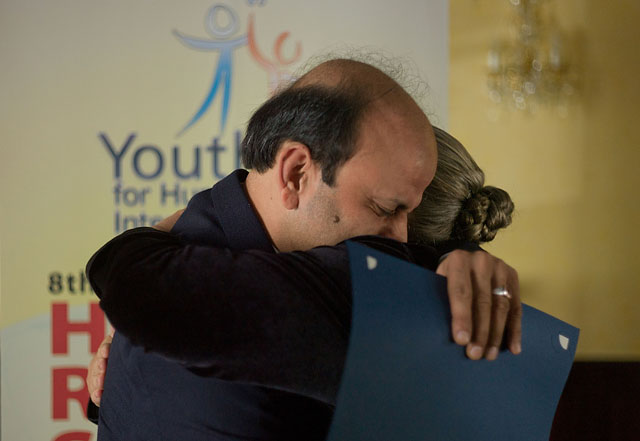
From the Human Rights Summit 2011 in Geneva where the Indian representative recieved a diploma acknowledging his outstanding work for Human Rights in India. Leica M9 with 50mm Summicron-M f/2.0.
Don't be an unpublished writer
Despite the fact that some photographers state they never show their photos, there is always an intended viewer or audience in mind. Why else would you record something you see, or try to record what you see in an aesthetic or funky way - if there were nobody to show it to? It's implled in the whole process of photography that some day, somebody shall enjoy this you made.
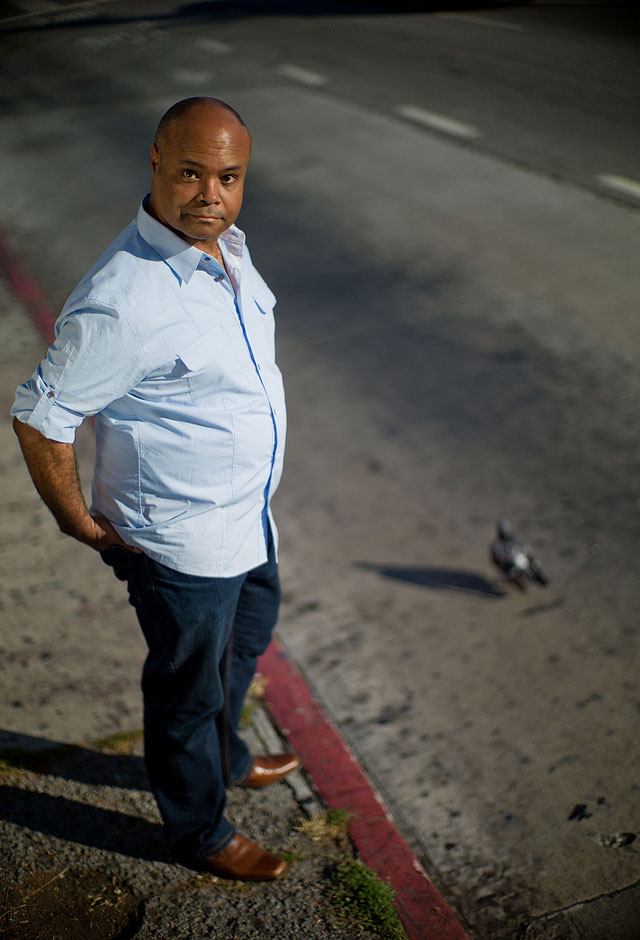
American actor Terence Hines shot with Leica M9 and Leica 50mm Noctilux-M f/1.0 at f/1.0 in sunshine with 3-stop ND filter. I was shooting down from a bench when the bird landed in front of him. When something unexpected happen, you shoot it. You never know what it will do for the picture
It doesn't make much sense to record something, and then not share it. Except if you don't have your workflow in place and thus never realize your successes; the images that are in fact worth showing. And of course some internet forums make it more comfortable not showing.
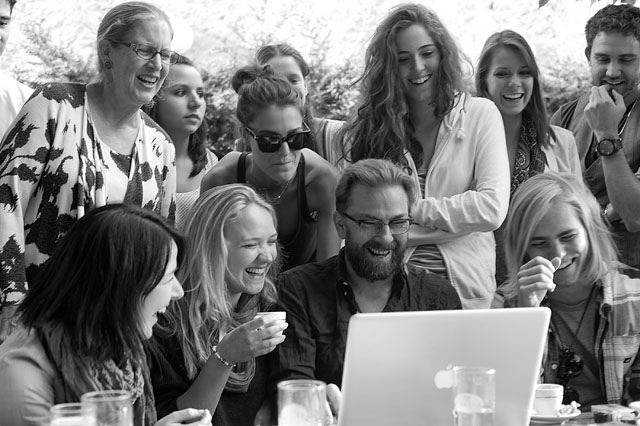
Viewing photos with the participants of the 8th Annual Human Rights Summit in Geneva in August 2011.
I urge people to show their photos. Don't be an unpublished writer. Put them on Facebook, Flickr, Google+, or make a selection to show from your iPad, iPhone or computer. But do show them. What you need to have is a workflow, and in short that simply means that every day (optimum) you edit through your photos and select the ones you want to be part of your archive. You don't delete any photos, but you simply concentrate on finding the ones that are good in some way or another. Those few good ones you finish and export as JPG out of Lightroom. And then you print them, put them on your iPad or on Facebook. You share them and you listen to what people say - or more importantly; you must seek to understand what people see and what they like even if they can't express it. And this is how you develop as a photographer: You learn what it is people see in your photos, because this is what defines your natural skills, your talent.
If people keep saying "you're good with kids" and you keep being concerned the focus isn't spot on, you're missing the point: You are great photographing kids.
It's a talent, a gift!
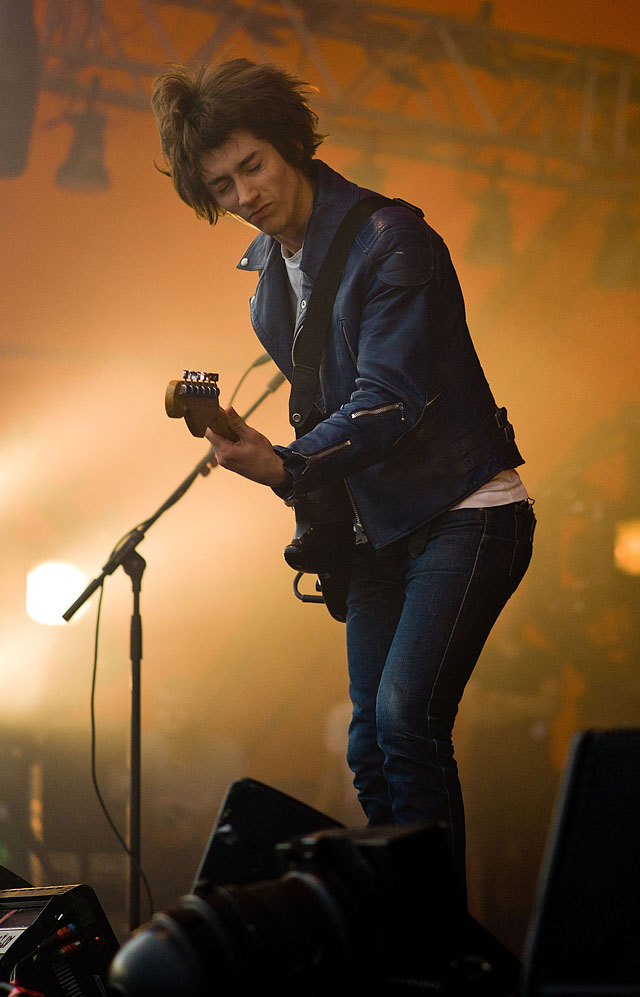
Alex Turner of Arctic Monkeys performing at Roskilde Festival 2011. Leica M9 with 90mm Summarit-M f/2.5.
What you may have done so far is focusing on your faults, your uselessness, your wrong exposures, and the wrong moments you caught so brilliantly sharp and vivid. All those un-decicive moments in wrong colors and underexposed. This is all wrong, wrong, wrong. You photograph to make a few good photos, not to test how large a percentage you missed.
If you don't have a workflow, you will never actually produce photographs, and thus you will have a failed purpose and will eventually stop photographing and become a collector of cameras instead. Not good.
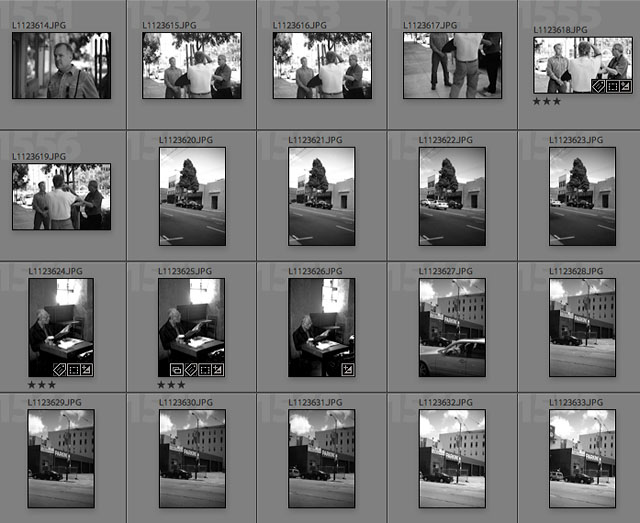
As an illustration, here is the section of my Lightroom where you find the photo shown above of the man in the café in San Francisco. I shot 803 photos over three days there, and then ended up with 18% or 145 of them as final photos. If you saw the ones I didn't select, you would laught, and 18% is pretty good already.
You may notice that I often have series of photos. This is because I aim for one photo that works, and in doing so I may experiement with light, composition, timing (people walking by or things moving about), exposure or so. You never see the ones that doesn't work, because I only show you the ones I succeded in getting right.
Some will frown over the fact that I dare shoot more than 36 frames per day. Doesn't matter; I get the shots I want. Some may be able to do it with less pictures taken, but it's a silly game. No galleries ever hang a photographers statistics up on a wall. Only the final images.
Advertisment:

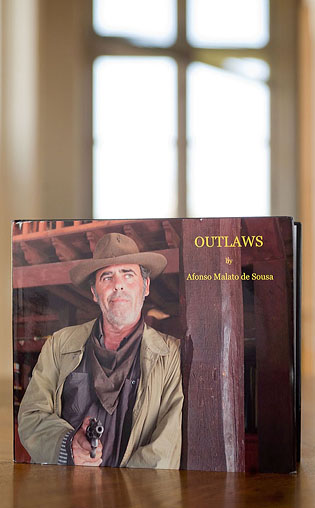 |
|
 |
| OUTLAWS by Afonso Malato de Sousa is a self-published book with stills from the movie sets of westerns. |
|
Drilling for Miners with photos of Leica M9 shooter by John Amedick. |
| |
|
|
Do your own books
One very good example of publishing yourself is the book OUTLAWS by Afonso Malato de Sousa of Portugal. He sent me this book after I had seen it onlin at Blurb.com. What is intersting and may come as a surprise for most people, is just how well a real book presents itself. For just 60$ one can get a hardcover book like this with dustjacket, and it's just amazing how much better the photos and the whole idea looks when presented like that.
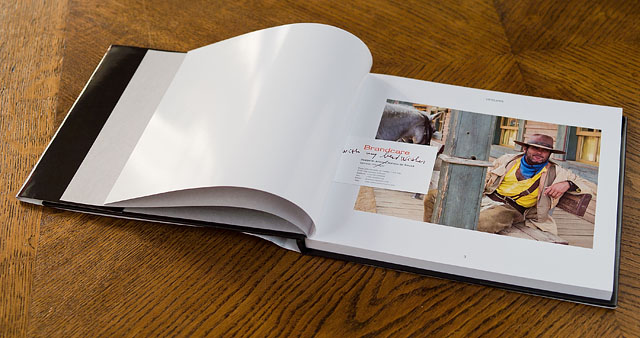
Afonso Malato de Sousa of Portugal has done this excellent book OUTLAWS with stills made with the Leica M9 from the Leone, Texas and Oasys Studios.
Another book I got is Drilling for Miners with photos of Leica M9 shooter John Amedick who's company Schlumberger participated in the rescue of Chilean miners after the mining accident on August 5, 2010. The company published the book as an acknowledgement to their employees who participated. The story was also featured at the Leica Camera Blog.
Another book I saw is one of Brian Parkes whom some may know from Red Dot Cameras in London. He is in fact a very accomplished architecture photographer, snapping citiscapes and details of architecture in London and about. His book was a one-off, made with the help of the sets of a hardcover and inkjet paper one can buy and thus create a single book of selected prints.
And I have met photographers who have made a handful of books of Christmas photos for their family members, or a handful of books for friends that took part in a skiing holiday.
Fine Art Prints
You may also find some good advices in how to do exhibitions and sell art prints in this free guide from Photoshelter.com.

Chimping
Speaking of being ready, chimping is a really bad habit. This is the act of checking the photo you just took on the display, and the term "chimping' is contributed to USA Today staff photographer Robert Deutschand who first described the phenomen in a September 1999 newsletter.
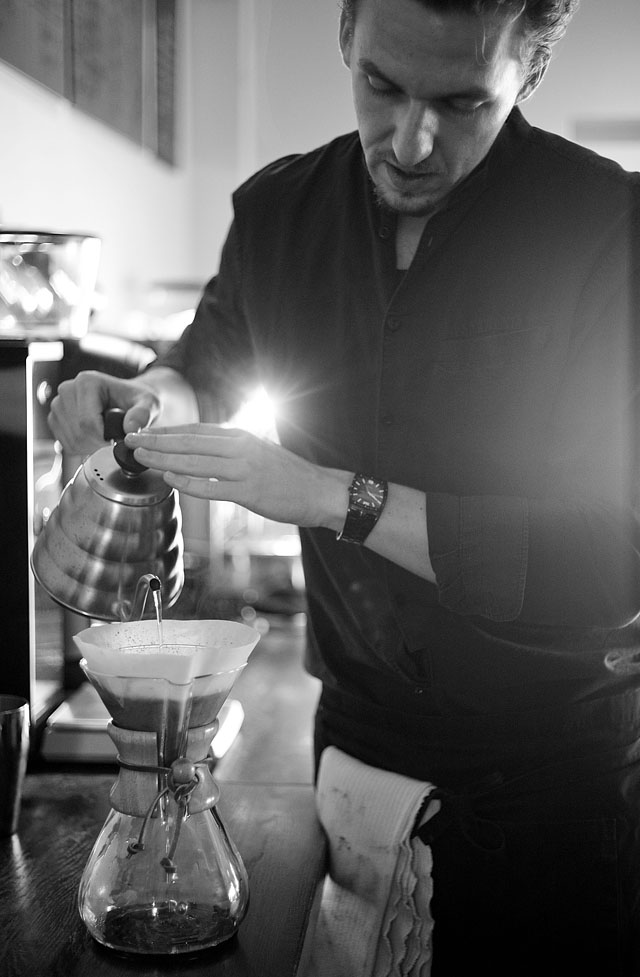
European Barista Champion Michael from Kaffe & Co in Denmark making coffee. Leica M9 with Leica 50mm Summicron-M f/2.0 (II).
| |
|
|
|
|
| |
Buy the new eBook
"A Little Book on Photography"
by Thorsten von Overgaard |
|
| |
|
|
|
|
| |

Order now - Instant delivery.
More info
★
★
★
★
★
★ |
|
It's a humorous understatement to call this
new eBook by Thorsten Overgaard for
"A Little Book on Photography".
It's a grand book, a history lesson, life experience, a biography and poetry book and brilliant photo book!
All in one beautiful package of 180 pages
to fire you up and get you to love
photography ... unconditionally!
"A Little Book on Photography"
eBook for computer, Kindle and iPad.
New release March 2017.
Intro price only $47 - 180 pages.
| |
|
|
| |
Buy Now

Instant Delivery |
|
| |
|
|

|
|
| |
|
|
I only have bad things to say about this. Apart from the obvious battery usage, it takes yor attention away from the subject. If a person this is really bad manners, but you will see even professional photographers spending half their shooting time chimbing (checking the photos they just took on their display) even at so important and exclusive events as shooting the newly wed royals on a balcony. It really does not make any sense that you line up in the morning with your 800mm lens to get the kiss on the royal balcony around midday, and then spend precious time during the two minute window checking photos!

American gospel singer Jesse Stevensson shot with Leica M9 and 50mm Noctilux-M f/1.0. It's acutally shot at f/1.0 and it wasn't till after I thought it was a bit strange shooting a concert wide open with a Noctilux, considering he wasn't standings still that often. But this one worked.
In other words, it's a bad habit, and for that reason speaking about better displays on Leica M9, Leica M9-P or a future Leica M10 does not make much sense. Because you really can't judge anything on the display. Even sharpness you can't trust on the display (as the camera software generate a previw for the small screen it's in any case not the same as what you got and will be seeing on your computer screen later), so you are better off shooting some more if you are concerned if you got the focus. Framing, colors and all is judged on a computer screen, not a camera screen. And if you ever delete a photo based on what you saw on your cameras display, I'll never talk to you again...
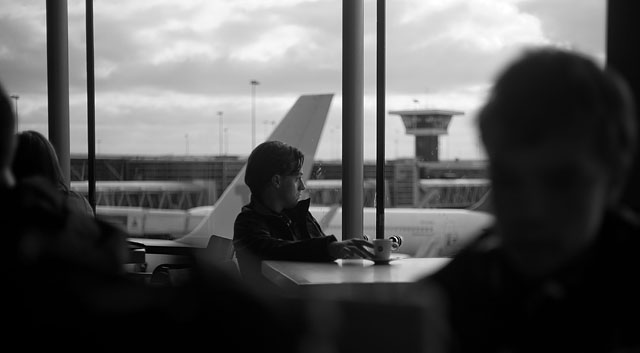
This image from an airport I didn't like when I first edited my photos. Only a week later I stumbled over it again (because it was one of the first in the "roll" of photos) and thought I would select it for later use. I think I had a vision, and it didn't come through as I had wanted, so I didn't like the result. Later I could see it with fresh eyes and saw another image and atmosphere. I don't usually revisit my images, but I'm sure that if I did I would find something interesting I missed the first time.
However, that is not the reason why I don't ever delete anything, the main reason is that I don't want to spend time on negative things. I shoot to get photos, not to delete photos. And I didn't burn the negatives I didn't like back when I shot film either, so why begin now? Leica M9 with 50mm Summicron-M f/2.0.
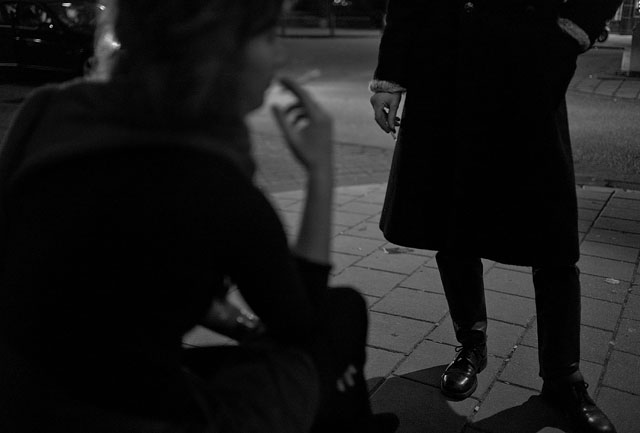
(If you read up on the history of photography - and I'm sure this would go for writers, painters, musicians and many others - you will learn that many great photos were picked up from the garbage bin or otherwise not thought greatly of at the time, till they were viewed in another light).
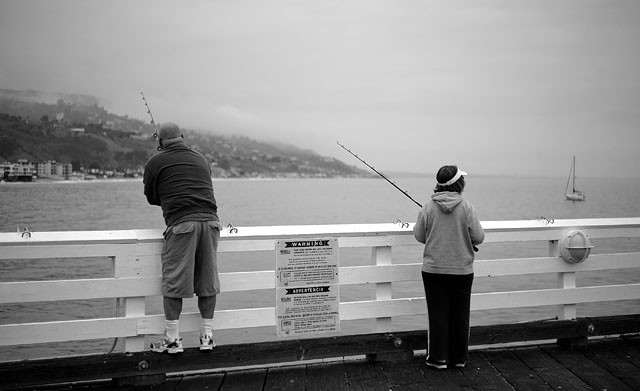
Malibu outside Los Angeles, July 2011. Leica M9 with 50mm Summicron-M f/2.0
The only thing you can use the screen for is to learn to use it in a workflow. Meaning that you will learn to judge if the exposure is within the range or if you need to correct it (and this is best done with the display preview set to black & white). You really can't judge the exposure or range of tones on a display, but you can learn to recognize when it looks right. As an example many evening and sunshine photos will look completely black in the shadows, but when viewed on a real computer, you will see it is anything than just black. Your main attention should be what is in front of the camera and what can be photographed in the future, not on the display trying to see what you did in the past.
What's left of it ...
In my case I have shot 84.175 pictures with the Leica M9, had the bottom plate refurbished, the buffer changed, the rangefinder mechanism glued back together once, the back replaced (with screen, buttons and wheel), and four times I have had the camera and sensor cleaned and the focus adjusted at the factory. I still use the same batteries and the same memory cards I got two years ago.

One of the first Leica M9 cameras produced, and has been in use since September 11, 2009. Currently sent back to the Mothership in Solms for a complete check
Part of the story is that I originallty shot with Leica R9 and digital back and only wanted a Leica M9 because it was so irresistible. But I planned on just fondling it and using if for fun. In the months after I had gotten it, I learned that often when I took pictures with the Leica R9 and the Leica M9 side by side, I tended to prefer the more casual look of the M9 rangerfinder pictures. And so did the clients.
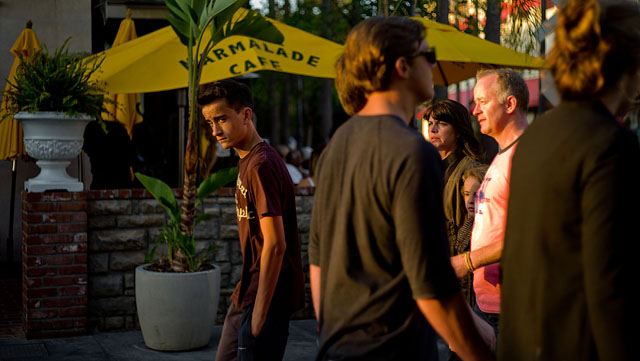
Los Angeles, July 2011. Leica M9 with 50mm Summicron-M f/2.0
Thus I used it more and more, and for the last many months I have gone on many travels with just the Leica M9. There really is no noed for any other cameras, though I must say it takes a while to get to that point. Because one reason to carry lots of equipment is insurance; that you will be able to get the shot. With only a Leica M9 and one lens you hav to believe in your self rather than the equipment to get the shot.
84.175 pictures with the Leica M9. In traditional Leica M lingo, this would mean 2,338 rolls of film, somewhat in the area of 16,350$ in purchase (if slide film) and 18,000$ in development. Not bad performed by a 7,000$ camera.
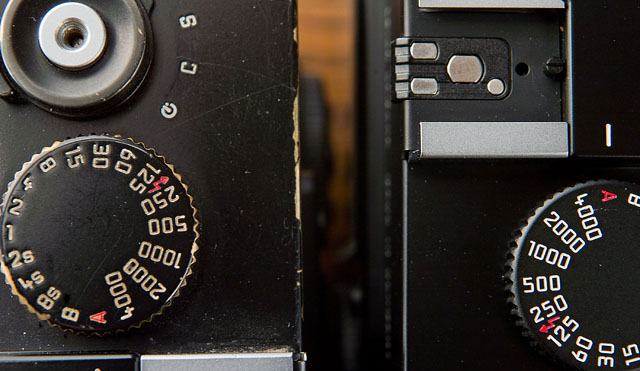
Two year old camera to the left, new one to the right: The white engravings usually will stay in place but will take some color. The body itself will become glossy where used a lot, and the paint will be scartched off on the edges, especially if the camera rest against zippers, leather belts or other "hard" material. As soon as you have worn the first holes in the paint, more quicly wears off.
It's been traveling too: Amsterdam (3 times), London (7 times), Berlin (3 times), Paris (3 times), Los Angeles (2 times), Phildadelphia, Aruba, Bonaire, San Francisco, Hamburg (4 times), Wetzlar (5 times), Münich (2 times), Frankfurt, Copenhagen (many times), Malmö (2 times), Stockholm, Atlanta, Washington, Hong Kong, San Francisco, Phoenix, Washington, Zurich, Geneva (2 times), Hannover, Beijing, Tokyo, New York (3 times), Koh Samui, Madrid, Cologne, Palermo, Mallorca, Charlotte - and about 15,000 kilometers of roadtrips across Europe and USA.
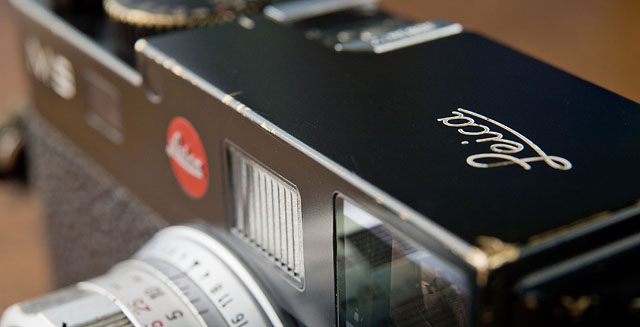
The paint on the Leica M9 will turn from pearl silk black to glossy black when used.
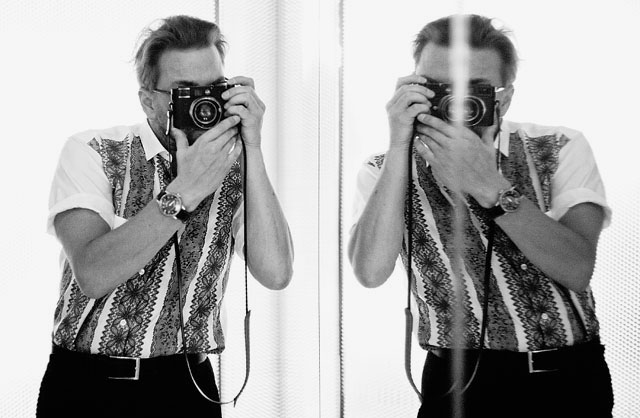
Leica virgin: The Leica 50mm Summicron-M f/2.0 is my preferred lens and I usually travel with just one Leica M9 (and two lenses; the 50mm and 90mm, at rarely times the 21mm as well). As many others I lust for every new lens that comes out, and yet I prefer the simplicity of as little equipment as possible, and of course the familiarity of equipment I know well. I get to try a lot of equipment when I go shoot with students on my seminars, and that sort of keep me satisfied. I have tried about every lens that exist, in every version. I don't need anything but still consider new lenses almost on a weekly basis.
I randomly go through the emotions of re-considering the very complete range of R-equipment I have. Should I sell it and add a few M lenses to make a complete M set as the only one? My conversations with my self mostly - or more precisely; always - ends with the fact that I can do what I need to do with the Leica M9 and one lens, and even though the R equipment doesn't get much use, I like to have it for those few things.
Continues on page 16 --->
For more info, join one of the Photo Seminars or Workshops
I maintain this site because I like to share and preserve knowledge. And when the site is not enough, feel free to join one of my classes around the world where you will meet likeminded people. See the calendar of seminars for locations and dates.
|
![]()
